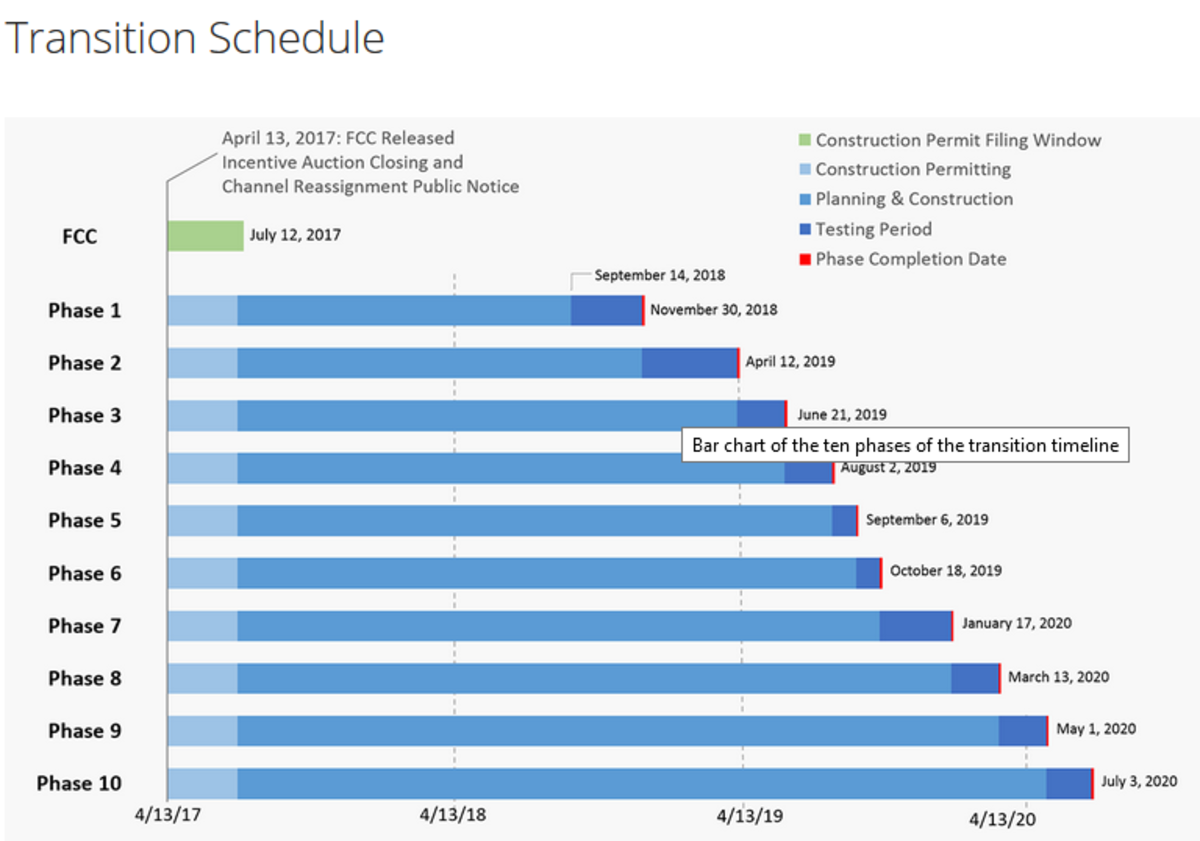Phase One and Done: FCC Marks First TV Station Repack Milestone
WASHINGTON--On Friday, Nov. 30, broadcasters in the first of a 10-phase post incentive auction repack must have completed their move to new channels and ceased broadcasting on their pre-transition channels. Phase two begins Dec. 1.
According to the FCC, more than 140 TV stations in over 20 markets will have moved frequencies when phase one is over, which includes stations that moved from later phases to phase one because they were ready early (see below), but does not include some original phase one stations that asked and got permission to move to later phases. The FCC built such flexibility into what is a Rubik's cube-like repack of stations.

For example, in just the last week the FCC granted requests from four stations to move from phase one to a later phase.
At press time, 94 stations across all 10 phases had gotten permission to move to another phase, both earlier and later, with more such requests in the pipeline, according to the FCC.
The commission has been keeping a log of those changes, so to check out just what a complicated and challenging exercise the repack is, go here.
Most of a thousand TV stations are being repacked in a process that extends to July 3, 2020, the deadline for the last phase to be completed in the 39-month process, though it could go longer since there is an extension available for up to 180 more days if, "despite all reasonable efforts, the station is unable to complete construction of its new facility on time due to circumstances that were either unforeseeable or beyond its control."
[Read: Repack Begins, Deadlines Tight]
Get the TV Tech Newsletter
The professional video industry's #1 source for news, trends and product and tech information. Sign up below.
Some of the stations that had already moved before the phase one deadline were paid by T-Mobile to exit sooner than scheduled so it could get earlier access to broadcast spectrum it won in the auction. Many hurricane-affected stations in the Virgin Islands and Puerto Rico were allowed to move to "phase zero" as well—rather than have to re-rebuild on their old channels then turn around and re-fit them for new channels.
Some argue that phase one was actually phase two given the early moves by many stations, but "phase zero" was more of an informal moniker for all the stations asking to make their switches before the phase one deadline.
Stations were required to move after 175 broadcasters relinquished rights to 70 MHz of spectrum in the broadcast incentive auction and the FCC needed to squeeze the remaining stations into smaller space to free up clean swaths of spectrum for wireless broadband companies like T-Mobile.
Stations moving to new channels have to modify their facilities—antennas, towers, transmission lines—to transmit on a different channel, then test that equipment (phase one testing began Sept. 14), all while remaining on the air and serving their local communities. Many had to coordinate with one or more other stations to prevent interference during testing.
The FCC is compensating broadcasters for their moves—and some MVPDs for re-tuning headends to the new channels—out of a congressionally mandated repack fund of a couple billion dollars.
For all the latest news and insight on the repack, visit our repack silo.
Contributing editor John Eggerton has been an editor and/or writer on media regulation, legislation and policy for over four decades, including covering the FCC, FTC, Congress, the major media trade associations, and the federal courts. In addition to Multichannel News and Broadcasting + Cable, his work has appeared in Radio World, TV Tech, TV Fax, This Week in Consumer Electronics, Variety and the Encyclopedia Britannica.

